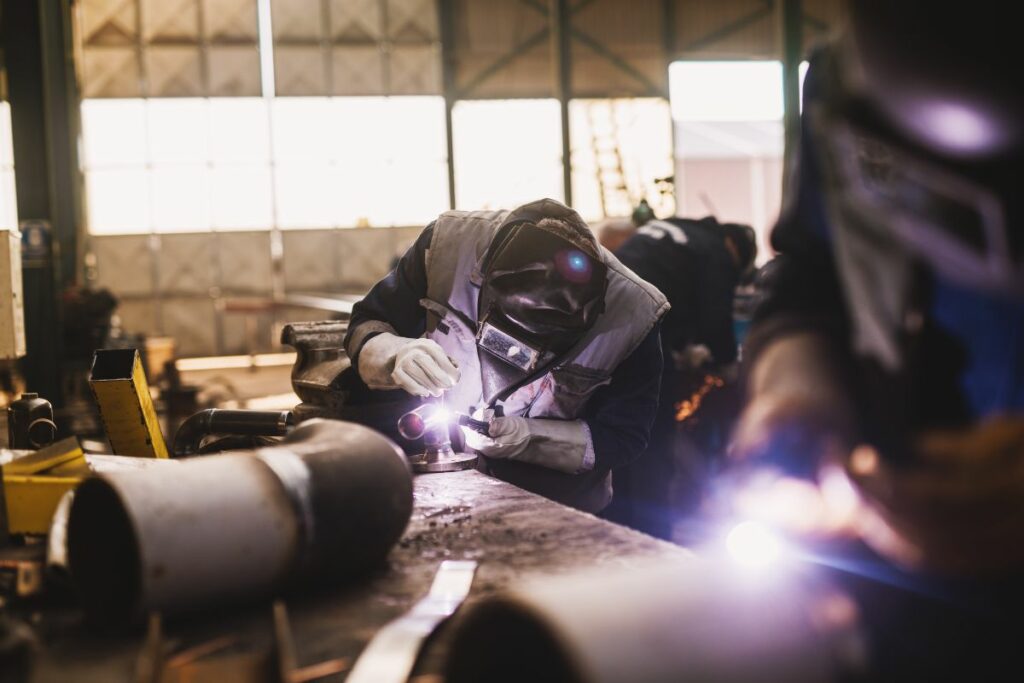
Welding is a powerful skill that opens a world of possibilities for DIY enthusiasts. Whether you’re working on automotive repairs, crafting metal sculptures, or building furniture, upskilling and mastering welding techniques can elevate your projects to professional levels. However, diving into welding without proper knowledge and preparation can lead to frustration and safety hazards. Here are some essential tips and techniques to help you embark on your DIY welding journey with confidence.
Before diving into welding repairs, it’s crucial to understand the basic principles of welding. Welding involves joining two pieces of metal together using heat to melt the base metals and then allowing them to cool and fuse. The most common types of welding used in DIY repairs are MIG (Metal Inert Gas) welding, TIG (Tungsten Inert Gas) welding, and Stick welding (SMAW – Shielded Metal Arc Welding).
Safety should always be the top priority when welding. Before starting any welding project, ensure you have the appropriate PPE (Personal Protective Equipment) include a welding helmet with a proper shade lens, welding gloves, a long-sleeved shirt, and pants made of non-flammable materials, as well as closed shoes. Additionally, work in a well-ventilated area to avoid inhaling harmful fumes, and keep a fire extinguisher nearby.
Proper preparation of your workspace is essential for successful welding repairs. Clean the area around the weld joint to remove any dirt, rust, or paint that could interfere with the welding process. Additionally, ensure that the metal surfaces are properly aligned and fit together snug to create a strong weld.
Selecting the appropriate welding technique is crucial for achieving quality repairs. For thin metals and precision work, TIG welding offers excellent control and produces clean welds. MIG welding, is ideal for thicker metals and faster welding speeds, making it well-suited for larger repair projects. Stick welding is versatile and can be used for a wide range of materials and thickness but requires more skill to produce clean welds.
Achieving high-quality welds requires practice and patience. Maintain a steady hand and consistent travel speed while welding to ensure even penetration and fusion of the base metals. Avoid excessive weaving or oscillation, as this can create weak spots or undercutting in the weld. Experiment with different welding parameters, such as voltage, wire speed, and electrode angle, to find the optimal settings for your specific repair job.
Even experienced welders encounter defects from time to time. Common welding defects include porosity, incomplete penetration, and weld spatter. Learn to recognize these defects and understand their causes to prevent them in your welds. Adjusting welding parameters, improving cleanliness, and using proper welding techniques can help minimize defects.
After completing a welding repair, thoroughly inspect the weld for any defects, such as cracks, porosity, or incomplete fusion. Use dye penetrant or magnetic particle testing to detect any hidden flaws in the weld. Additionally, perform destructive tests, such as bend tests or tensile tests, to verify the strength and integrity of the weld.
After completing your welds, it’s essential to perform post-welding cleanup to ensure a professional finish. Use a wire brush or grinder to remove any splatter from the weld surface. Inspect the weld for any defects or inconsistencies and address them promptly. Finally, consider applying a protective coating or paint to prevent corrosion and enhance the appearance of your weld.
Welding repairs offers DIYers the opportunity to tackle a wide range of projects with confidence. By mastering essential welding techniques, understanding different welding processes, and prioritising safety, you can achieve professional-quality results in your welding endeavors. Remember, practice makes perfect, so don’t be afraid to experiment and refine your skills over time.
Ready to take your welding skills to the next level? Consider enrolling in the Welding Academy. With expert instruction, hands-on learning opportunities, and a supportive community, the Welding Academy is your pathway to mastering the art of welding. Join us and unleash your potential as a skilled welder today!